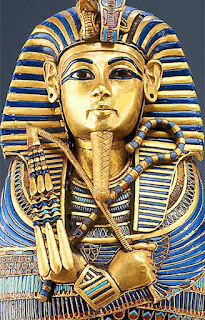




Nearly a century after Tutankhamun's tomb was dug up, a man says he was severely injured by electrical shock and chemical fumes at a display of the ancient Pharaohs stuff.
Carman Fields sued the Franklin Institute Science Museum and Mandell Center in state court. He claims the state of disrepair of display cases in the "Tutankhamun and the Golden Age of the Pharaohs" exhibit was so negligent that he received a severe electrical shock and was overcome by chemical fumes in September 2007. Fields says he suffered severe pain that radiated from his head through his torso and into his extremities. Since then, he says, he has suffered persistent headaches, chronic dizziness, imbalance, disequilibrium and forgetfulness. He wants $50,000.
Odd occurrences have been rumoured to surround Tutankhamun artefacts since his tomb was dug up in 1923. Legend has it that anyone who dared to open the tomb, which escaped all but minor looting for more than 3,000 years, would suffer the wrath of the Pharaoh.
Personally I think we could more easily account this to the 'suing for damages' curse that seems to be one of the plagues of Modern America, rather than to the curse of the Pharoah. ;)
The Mummy - 1932
Why mention this? Well, I needed a reason - besides that it's totally awesome, in a vintage kind of way - to post this old film trailer for 'The Mummy' by Karl Freund, dating back to 1932:
"Stranger than Dracula. More mysterious than the Invisible Man! The Mummy! Is it dead or alive? Human or inhuman? You'll know! You'll see! You'll feel the awful creeping crawling terror that stands your hair on end and brings a scream to your lips. There's nothing on earth like the mummy!"
The story? In 1921 a field expedition in Egypt discovers the mummy of ancient Egyptian prince Imhotep, who was condemned and buried alive for sacrilege. The inscriptions on his coffin reads 'Death: Eternal punishment. For. Anyone. Who. Opens. This. Casket.' Also found in the tomb is the Scroll of Thoth, which can bring the dead back to life. One night a young member of the expedition reads the scroll out loud, and then goes insane, realizing that he has brought Imhotep back to life. Ten years later, disguised as a modern Egyptian, the mummy attempts to reunite with his lost love, the ancient princess Princess Anck-es-en-Amon, who has been reincarnated into a beautiful young woman, Helen Grosvenor. Imhotep requires Helen to die so he can revive his princess and make her a living mummy like himself.
Shortly summarized in trailer-speak: "Buried alive for 3700 years! Brought back to live, love and kill! The amazing, incredulous, unbelievable story of the nameless horror! The Mummy!" *shivers*
Anybody in for a movie night? Or is The Mummy (1932 edition) not scientifically correct enough to your liking? Ah well, we also have some 'serious' mummy news on offer: Dr. Zahi talks to Heritage Key about the recent research on King Tut's DNA, and identifying one of his still-born children, a daughter. And don't even get him started about Tutankhamun's health and walking sticks!



































